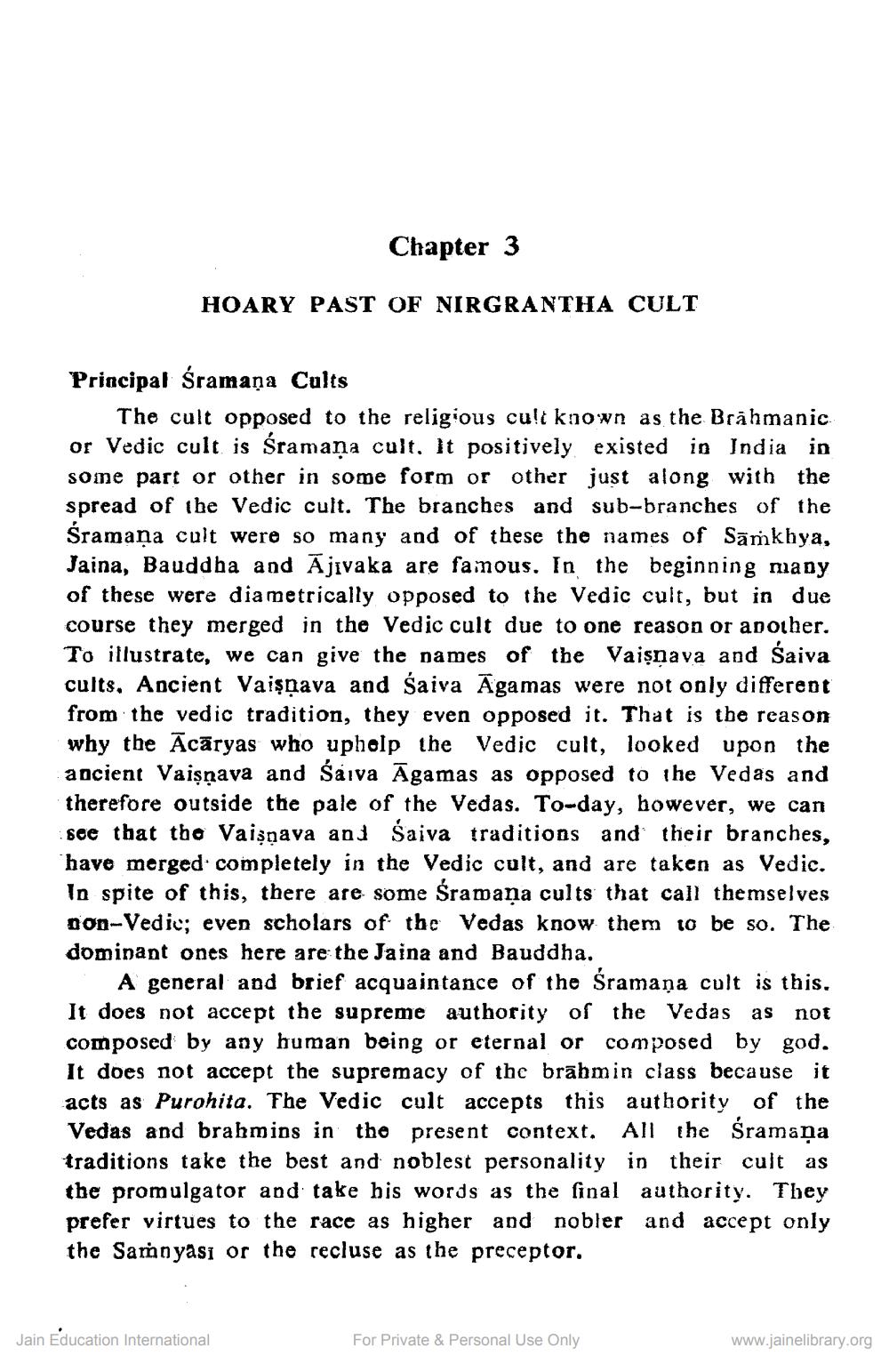________________
Chapter 3 HOARY PAST OF NIRGRANTHA CULT
Priacipal śramaņa Cults
The cult opposed to the religious cu!t known as the Brāhmanic or Vedic cult is Sramana cult. It positively existed in India in some part or other in some form or other just along with the spread of the Vedic cult. The branches and sub-branches of the Śramaņa cult were so many and of these the names of Samkhya, Jaina, Bauddha and Ājivaka are fainous. In the beginning many of these were diametrically opposed to the Vedic cult, but in due course they merged in the Vedic cult due to one reason or another. To illustrate, we can give the names of the Vaişnava and Saiva cults, Ancient Vaişnava and Saiva Āgamas were not only different from the vedic tradition, they even opposed it. That is the reason why the Ācāryas who upholp the Vedic cult, looked upon the ancient Vaişņava and Saiva Āgamas as opposed to the Vedas and therefore outside the pale of the Vedas. To-day, however, we can see that tho Vaişnava and Saiva traditions and their branches, have merged completely in the Vedic cult, and are taken as Vedic. In spite of this, there are some Šramaņa cults that call themselves Don-Vedic; even scholars of the Vedas know them to be so. The dominant ones here are the Jaina and Bauddha.
A general and brief acquaintance of the Śramaņa cult is this. It does not accept the supreme authority of the Vedas as not composed by any human being or eternal or composed by god. It does not accept the supremacy of the brāhmin class because it acts as Purohita. The Vedic cult accepts this authority of the Vedas and brahmins in the present context. All the śramaņa traditions take the best and noblest personality in their cult as the promulgator and take his words as the final authority. They prefer virtues to the race as higher and nobler and accept only the Samoyası or the recluse as the preceptor.
Jain Education International
For Private & Personal Use Only
www.jainelibrary.org




